| This is a bear
of a job. It's not fun. Lots of lower-raise-reposition -
lower - raise - reposition to get things correctly aligned. First, line the engine-transmission up
roughly so that the mounting points on the motor will match the points
on the car. The hoist I used had swivel casters on the rear but
not at the front (under the engine), so it was difficult to move
laterally with the weight of the engine. |
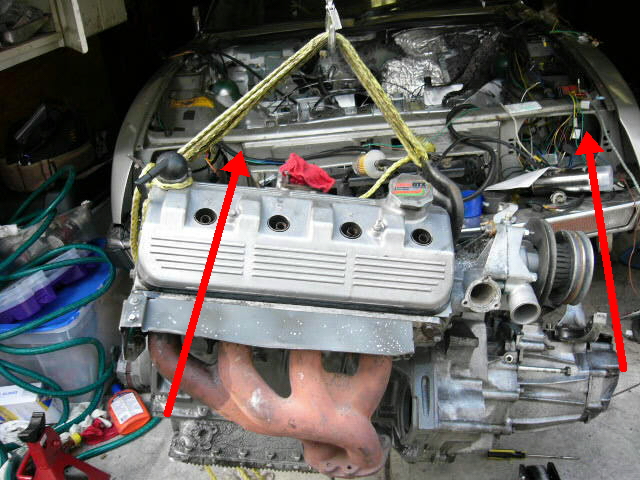 |
| |
| Positioning over the engine bay |
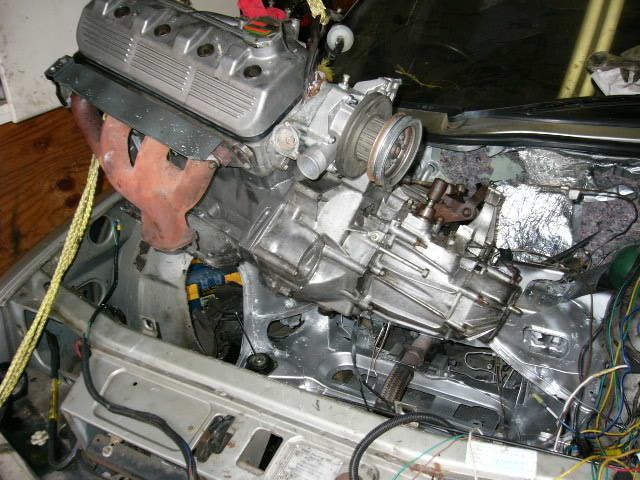 |
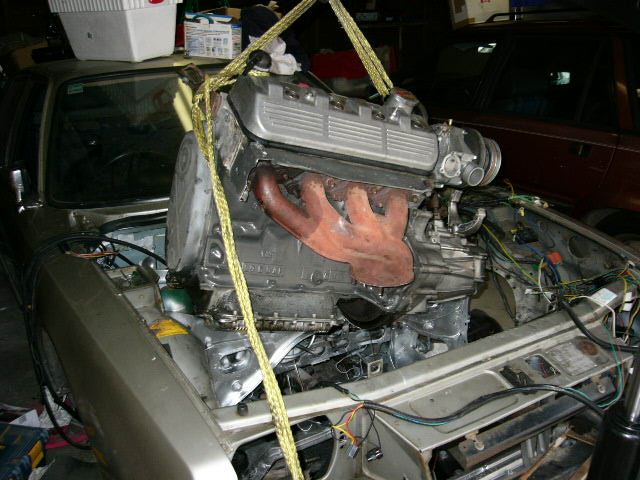 |
| |
| As you lower the engine in to the car,
the engine will likely hit several areas inside the engine bay. |
| Here, the differential is very
close to the upper cross member and the linkage for the gear
selectors. |
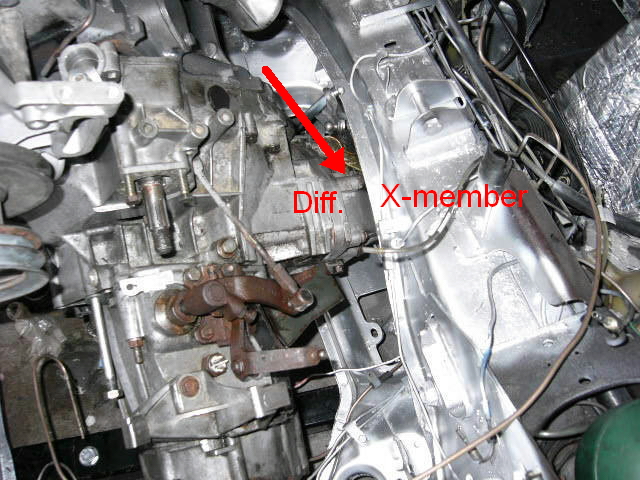 |
| |
| On the other side, the mid-shaft bearing
race is also likely to hit the crossmember. You will also see
the silent-bloc for the lower engine mount. I put a broken
aerial through it. The aerial is on the axis that the motor
mount needs to descend, for proper alignment. |
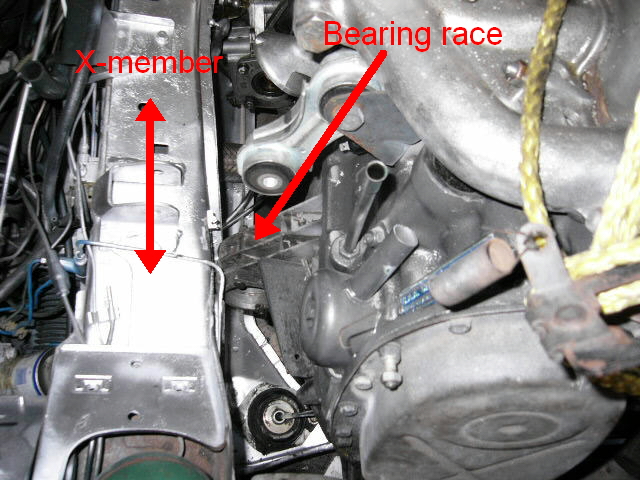 |
| |
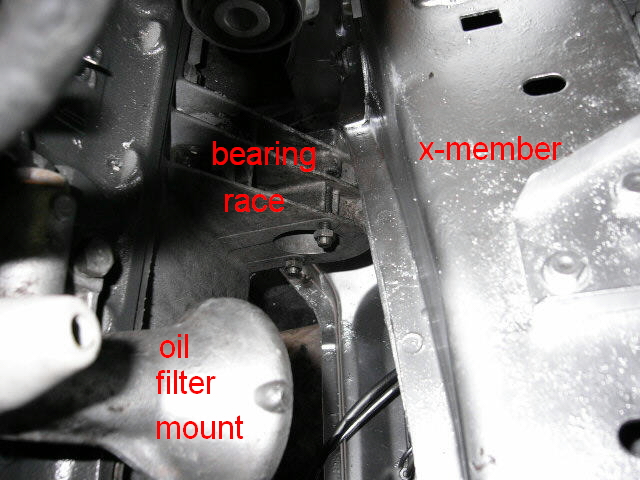 |
| |
| There is a metal shield immediately above
the area where the triax housing joins the differential. It is
there to keep items from falling on and around the triaxes.
This is also likely to get bent. I now realise that I should
have removed and rustproofed these shields. Perhaps I can still
remove them easily even though the powertrain is back in the car. |
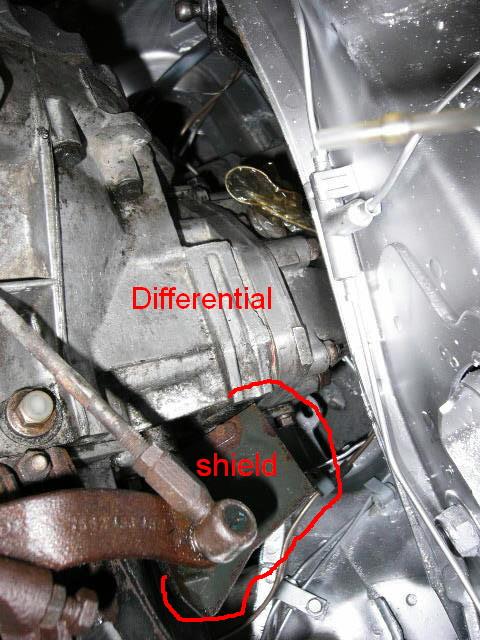 |
| |
| Here is a close-up of where the motor
sits on the lower silent-bloc. I had a broken aerial, so I stuck
it though the hole in the silent-bloc. Since the aerial is in
the hole in the silent-bloc, it is along the axis that the motor mount
needs to be on in order to seat properly. This helped to align
the mount on the engine to the silent-bloc. |
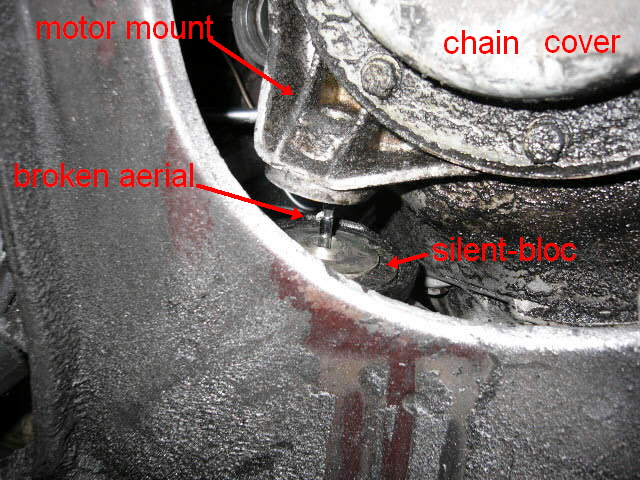 |
| |
| When I had the right motor mount roughly
aligned, I supported the LEFT transmission mount with a trolley jack. This
probably was not necessary, but I thought would make positioning the
RIGHT side (motor) mount easier if the powertrain had several points of
support. |
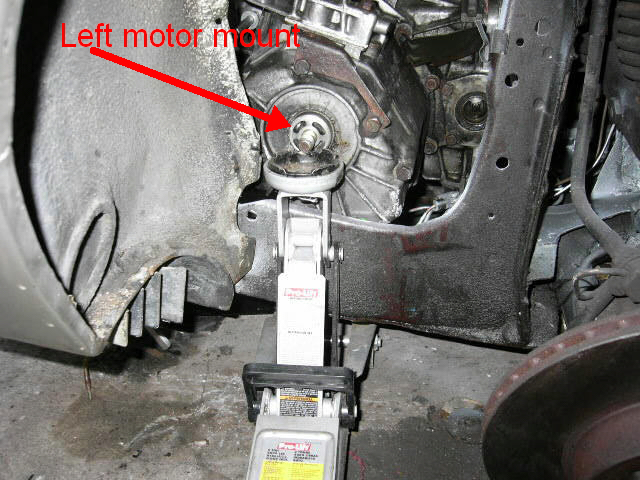 |
| |
| With the left (transmission) side of the powertrain
supported, I went back to the right (engine) side and set the engine mount down
on the silent-bloc. |
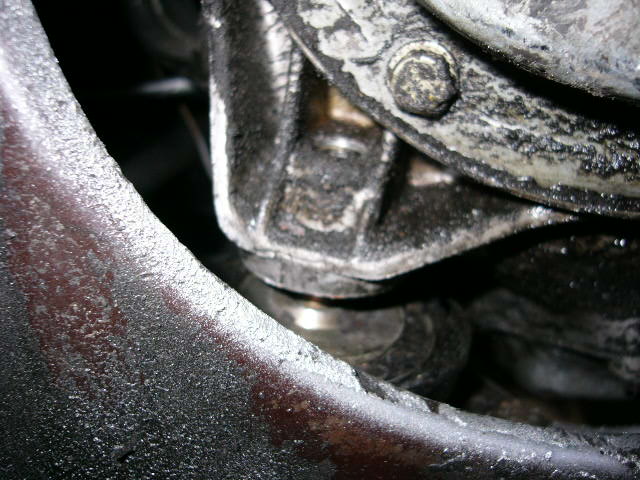 |
| |
| I put the bolt in place, but I only gave
it 1-2 turns. 19mm socket. You want it to be VERY LOOSE
right
now. There should be a lot of wiggle room for the whole
powertrain while the other mounting points are being set. |
| |
| I relocated the trolley jack so that it
supported the powertrain from the clutch bellhousing. Remember,
the hoist is still supporting the powertrain. |
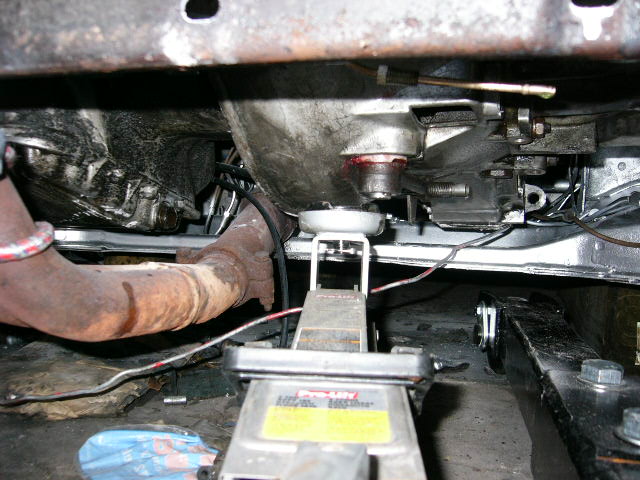 |
| |
| This is the left (transmission) side of the powertrain
with the four holes for the left-side silent bloc arrowed. |
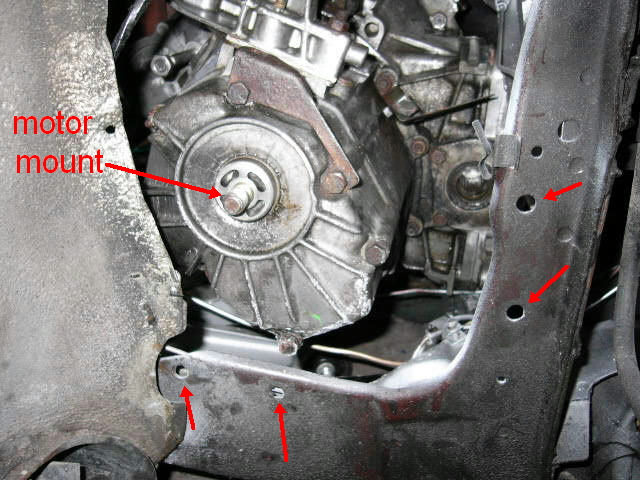 |
| |
| I wondered why the left silent-bloc had
one of the mounting holes cut out like this. |
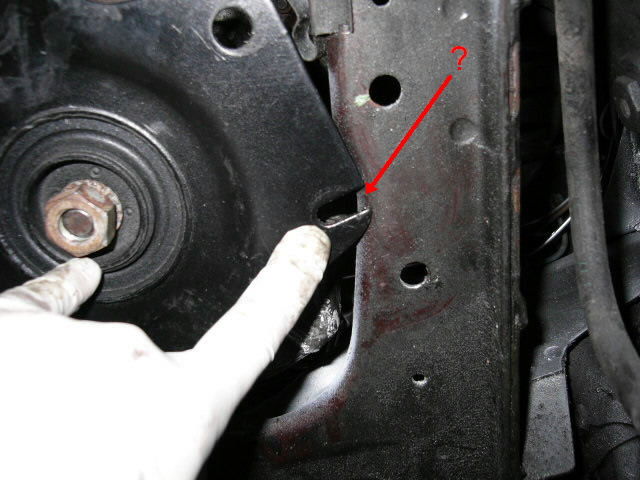 |
| |
| I discovered that it is impossible to
hold the nut on the other side of the frame to tighten the bolt.
So, this bolt should be installed before you set the silent-bloc in
place. |
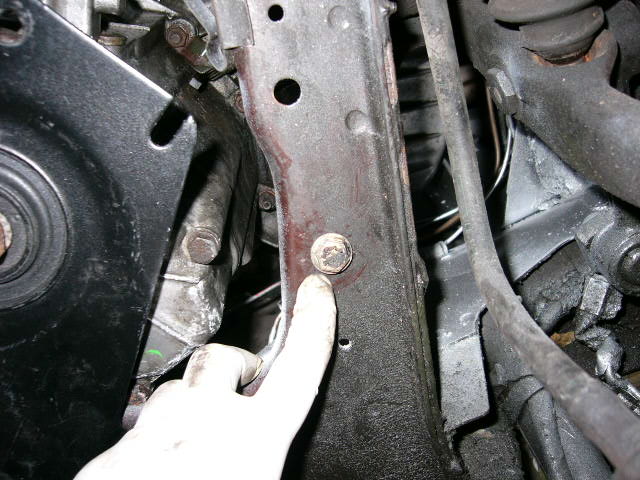 |
| |
| With the first bolt installed when you
have the room to do it comfortably, you can then position the
powertrain to align the silent-bloc with the other holes. Again DO NOT
TIGHTEN THE BOLTS. You want things nice and loose for now.
Remember, the engine is still supported by the hoist and the trolley
jack. |
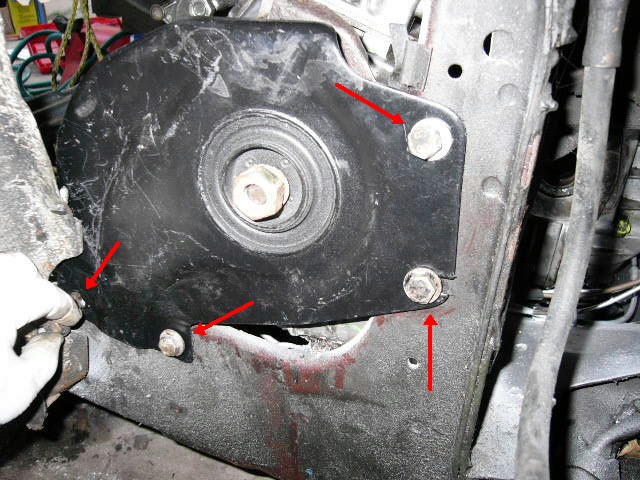 |
| |
| A view of the engine side of the fluid
bloc, looking straight down at the longitudinal frame rail that runs
towards the front bumper. These are new nuts and washers;
I will also install new bolts with locktite on them. For the
moment I am using the old bolts, because they will undergo a lot of
stress from the positioning. M8 with a
1.25 pitch. 13MM socket |
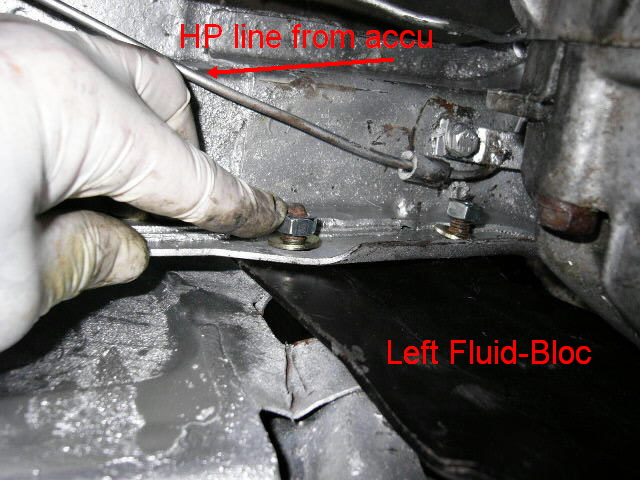 |
| |
| This view is looking down at the engine
side of the silent-bloc, at the two bolts at the rear of the bloc.
I have noted the bolt and nut that must be installed first.
There is no clearance between the case for the fifth gear and the
hole. I guess you could try to set the bolt with the
silent bloc and transmission in place, but it's a colossal waste of
time. |
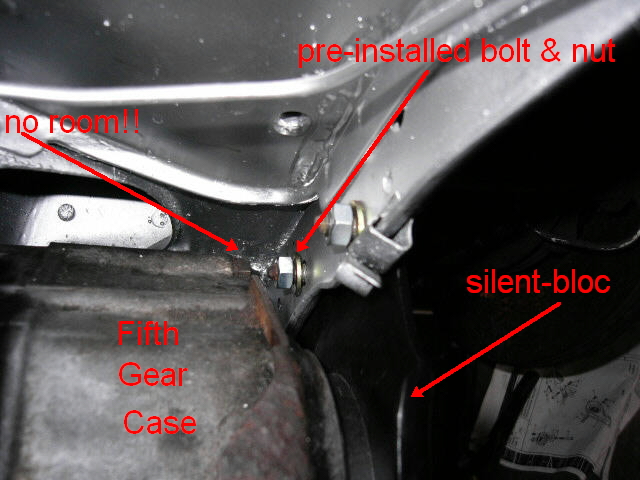 |
| Those little magnets on the end of a
stick are indispensable. I dropped a lot of nuts and washers
trying to set that lower bolt before I realised it had to be set
before putting the silent bloc in place. |
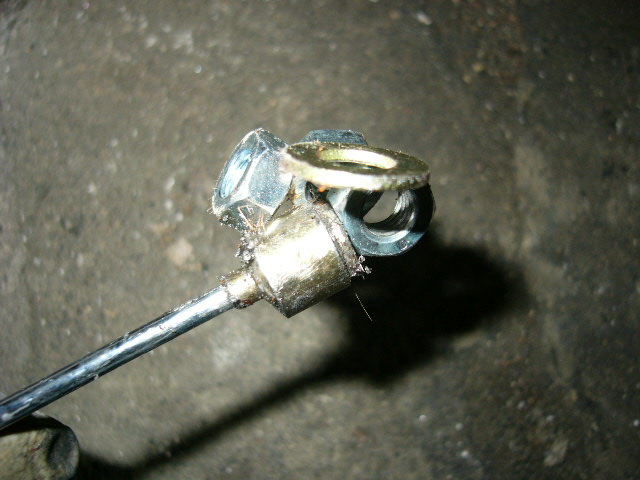 |
| |
| Here is one reason why you want all the
bolts loose for now. The dogbone should be 'erect' and having
the engine loose will let you give it the right stroke to get it up. |
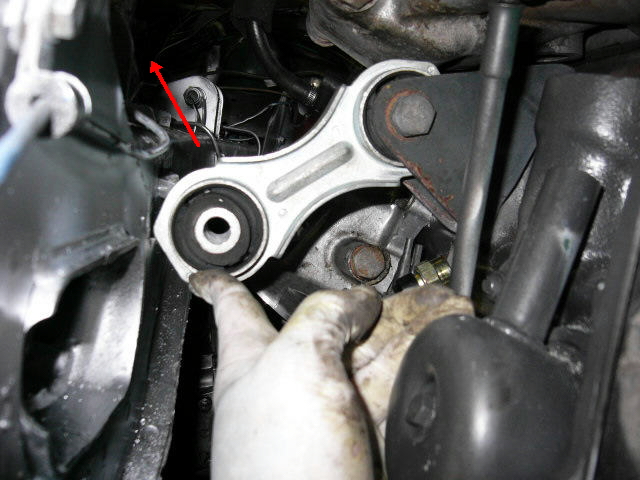 |
| |
| Engine side dogbone installed. No
it is not the new one. The new dogbones are thicker than those
specified for this car, so they did not fit. I reinstalled the
old dogbone as a temporary measure. I will install a
modified porkchop. |
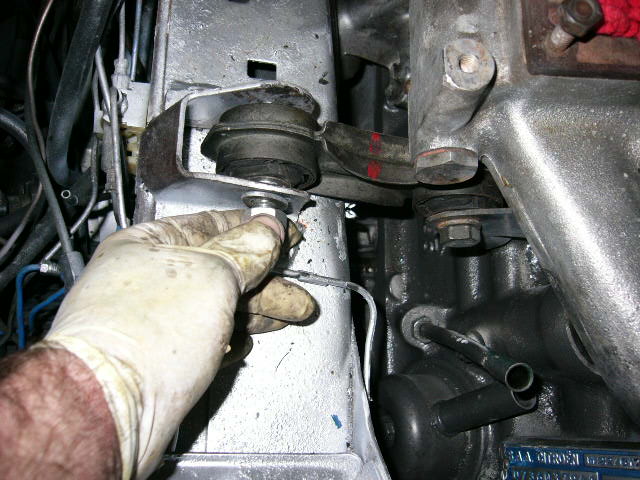 |
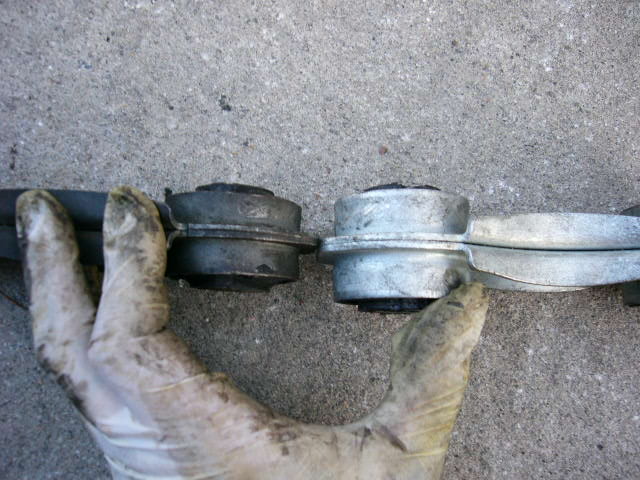 |
| |
| You should go around with a wrench and
tighten up all the bolts. Not too tight, but more solid than
before. You want the mounting system to have a little bit of
wiggle room when you let the powertrain settle on the mounts.
Gradually release the pressure on the engine hoist and allow the
powertrain to sink down. Your ears are your best tools here.
If some part of the frame or engine is supporting the weight, there
should be some noise of metal strain. |
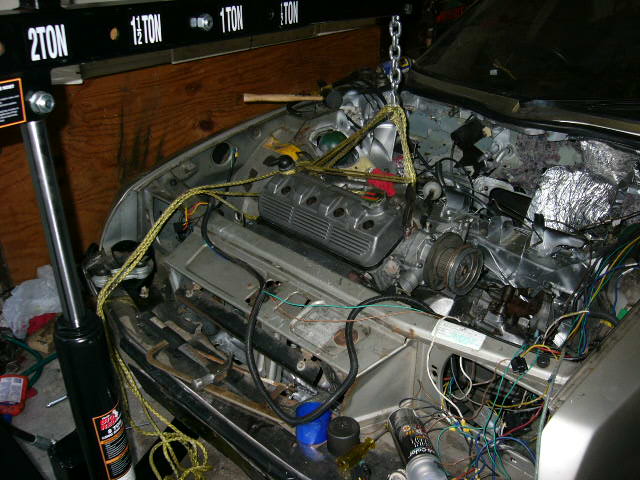 |
| |
| With the hoist removed, the powertrain
settles onto the silent-blocs . |
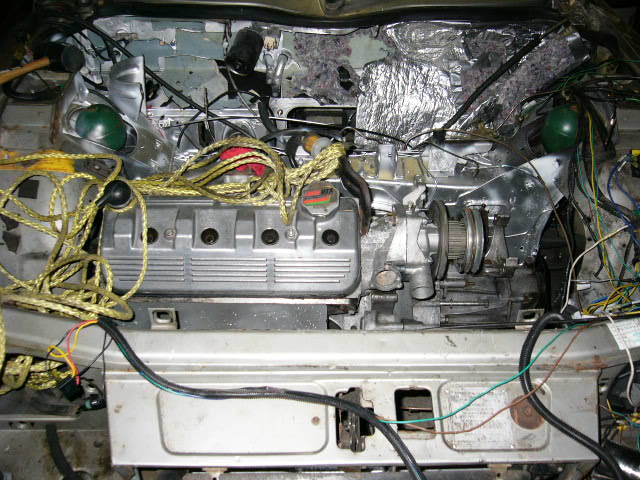 |